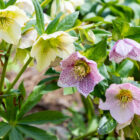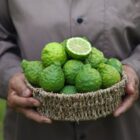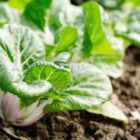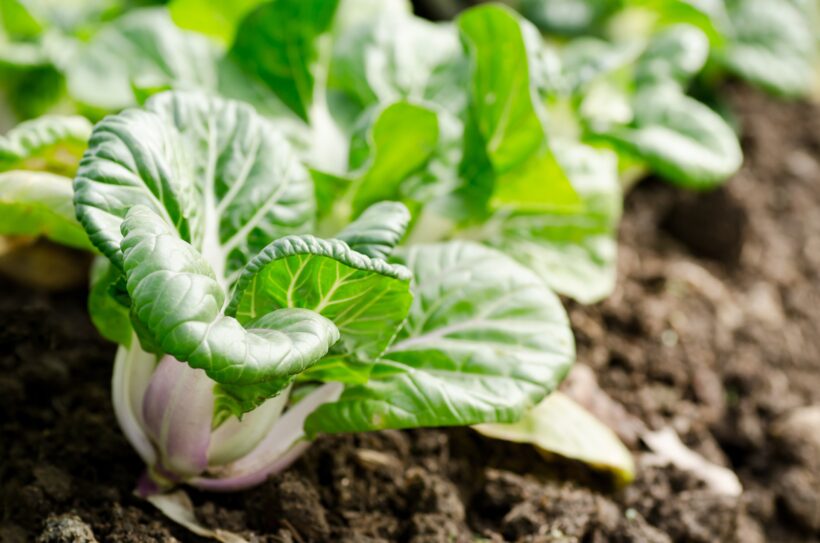
Pak choi: how to grow it in your vegetable garden
Pak choi: the Chinese cabbage you can’t miss in your garden 
Pak choi, or Chinese cabbage or bok choy, belongs to the Brassicaceae family. From China, this cabbage has become an essential ingredient in our kitchens. This is due to its delicate flavor and is used in a variety of healthy recipes. You don’t need a large garden to grow pak choi—it can also grow on a balcony. This makes it an ideal choice for city dwellers who still want to enjoy the pleasures of gardening and fresh, homegrown produce. If you’re ready to take on a new green project, pak choi is the perfect choice. Do not hesitate to cultivate something exotic—it’s actually very easy. So why wait? Grab some pak choi seeds today and transform your garden or balcony into a lush green paradise!
Tips for growing pak choi
In this comprehensive guide, Doctor Bioges will walk you through every step necessary to successfully grow pak choi. It covers everything from soil preparation to sowing and fertilization. Every step is crucial for promoting the vigorous growth of Chinese cabbage plants. Doctor Bioges will also provide instructions on how to water the plants to keep them fresh and thriving. Lastly, the guide includes essential tips on harvesting this Asian vegetable. By following the expert advice, you’ll not only produce high-quality Chinese cabbage but also experience the deep joy and satisfaction of watching your plants thrive. Get ready for an extraordinary experience that will enrich both your garden and your spirit!
Pak choi: soil pH and secrets for its perfect growth
Before starting to prepare the soil for sowing pak choi, it is important to obtain specific information on the needs of this plant. Pak choi prefers soil with a pH that is close to neutral or slightly alkaline. A neutral pH is approximately around 7, while a slightly basic pH can vary between 7 and 8. This pH range favours optimal absorption of the nutrients required for healthy plant growth. If the soil has a pH that is too acidic or too alkaline, it may be necessary to make corrections in order bring it to the desired level. Therefore, knowledge and proper management of soil pH are key steps in preparing the soil for planting pak choi. Ensuring that the soil is suitable for the needs of the plant will contribute significantly to a rich and healthy harvest.
Preparing the soil before planting
After checking the pH of the soil and making any corrections, one must proceed to choose an area of the vegetable garden that receives a good amount of sunlight during the day. This vegetable, in fact, likes to grow in direct sunlight. Once you have found the right spot, you can start working the soil. So, using a hoe, start digging and loosen the soil well. This should be done to break up any hard clods and make sure that the soil is nice and soft and aerated. It will also help the roots of the plants to develop better. If the soil is clayey or compacted, some sand or gravel should be added to improve water drainage. It is also important to enrich the soil with nutrients using a garden fertiliser. The fertiliser should be spread evenly over the seedbed and should be lightly buried.
What garden fertiliser should you use?
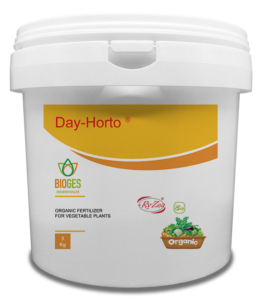 Before sowing, it is essential to distribute a garden fertiliser with a low nitrogen content. Indeed, like many green leafy vegetables, turnip greens do not tolerate too much nitrogen, which would cause a build-up of harmful nitrates. In particular, Doctor Bioges recommends distributing Day-Horto slow-release garden fertiliser, which, thanks to its valuable macronutrients, guarantees the production of healthy fruit and vegetables. In addition, this pellet fertiliser is characterised by soil-improving properties that improve soil structure and fertility. Day-Horto is also ideal for subsequent maintenance and production fertilisation.
Before sowing, it is essential to distribute a garden fertiliser with a low nitrogen content. Indeed, like many green leafy vegetables, turnip greens do not tolerate too much nitrogen, which would cause a build-up of harmful nitrates. In particular, Doctor Bioges recommends distributing Day-Horto slow-release garden fertiliser, which, thanks to its valuable macronutrients, guarantees the production of healthy fruit and vegetables. In addition, this pellet fertiliser is characterised by soil-improving properties that improve soil structure and fertility. Day-Horto is also ideal for subsequent maintenance and production fertilisation.
When to sow bok choy
Generally, the right time to sow pak choi depends mainly on the local climate. If you live in an area with a temperate climate, you can start thinking about sowing as early as spring, starting in March or April. These months are perfect because the temperatures start to rise but are not yet too high. One must not, in fact, forget that this vegetable prefers cool temperatures and does not particularly like summer heat. On the contrary, if you live in an area where the summer can be very hot, it might be better to opt for autumn sowing. September and October can be ideal months because temperatures start to drop and humidity rises a little, conditions that favour the growth of pak choi. To sum up, spring and autumn are the best seasons for excellent results.
Crop rotation
Pak choi is a vegetable belonging to the Brassicaceae family, just like cabbage, rocket, radish, turnip and garden cress. It is therefore essential to alternate the cultivation of pak choi with other plants that belong to different botanical families. Doctor Bioges recommends waiting at least three cultivation cycles before replanting pak choi in the same spot in the vegetable garden. Alternating cultivation, therefore, not only helps keep the soil fertile and healthy but also prevents the build-up of pests and diseases specific to brassicas. In this way, your vegetable garden will remain productive and balanced in the long run.
How to water pak choi
It is essential to water the pak choi plant regularly. This vegetable particularly prefers soil that remains constantly moist and cool. However, watering should not be exaggerated. It is important to strike the right balance: the soil must always be hydrated, but it is essential to allow it to dry out slightly between watering. Special care must be taken as its roots are quite delicate and can suffer if the soil is too dry or too wet.
Doctor Bioges recommends watering preferably in the early morning or late evening, when temperatures are cooler and water can penetrate the soil without evaporating too quickly. Furthermore, if the days are particularly hot, it may be necessary to increase the frequency of watering in order to keep the pak choi healthy and ensure that it grows luxuriantly. In short, with a little care and a few tricks, you can have beautiful pak choi plants in your vegetable garden!
Pests and diseases of pak choi
As with all brassicas, bok choy is not immune to diseases and pests that can affect the quality and quantity of the harvest. Among the main diseases that can affect them are downy mildew and alternariasis. As far as pests are concerned, pak choi can be attacked by altica, aphids, the latter of which nestle on young leaves and shoots, causing deformities and delays in plant growth. Another pest that can attack Chinese cabbage is the cabbage moth, a species of butterfly that poses a major threat. In particular, this small, voracious pest can devour leaves in a very short time, leaving only skeletal veins.
How to protect your Chinese cabbage plants?
 Good agricultural practices are helpful in preventing these problems. For example, good crop rotation can help reduce the incidence of soil-borne diseases. In addition, it is necessary to keep the vegetable garden clean of plant debris and the use of protective nets can be effective against flying pests. In addition, to reduce the incidence of fungal diseases, the use of resistance-inducing fertilisers, which are a viable alternative to plant protection products, is essential. The application of these natural formulations makes plants more resistant to pathogen attacks. In particular, Doctor Bioges recommends the regular application of Propolis, which makes plants more resistant to attacks by pathogens, pests and various physiopathologies.
Good agricultural practices are helpful in preventing these problems. For example, good crop rotation can help reduce the incidence of soil-borne diseases. In addition, it is necessary to keep the vegetable garden clean of plant debris and the use of protective nets can be effective against flying pests. In addition, to reduce the incidence of fungal diseases, the use of resistance-inducing fertilisers, which are a viable alternative to plant protection products, is essential. The application of these natural formulations makes plants more resistant to pathogen attacks. In particular, Doctor Bioges recommends the regular application of Propolis, which makes plants more resistant to attacks by pathogens, pests and various physiopathologies.
When to harvest bok choy?
Pak choi is a vegetable that grows fairly quickly. It usually takes around 45-60 days from sowing to be ready to harvest. It should be harvested before it reaches a weight of about 1 kg and when the leaves are nice and crispy green. If the leaves start to turn yellow or have become soft, it is a sign that the plant is becoming overripe. To harvest, simply cut off the entire plant at the base with a sharp knife. We recommend harvesting pak choi early in the morning when temperatures are cooler; this way you will better preserve its crunchiness and nutrients. Growing and harvesting pak choi is not only easy but also extremely rewarding. You will look forward to using it in your favourite recipes, such as soups or fresh salads! Have fun with your vegetable garden!
What properties does Chinese cabbage have?
Pak choi is a green leafy vegetable rich in health benefits. It is an excellent source of vitamins and minerals and contains high amounts of vitamin C, which is essential for strengthening the immune system and protecting cells from oxidative damage. In addition, pak choi is rich in vitamins A and E, which are important for eyesight and skin. This cabbage is also a good source of folic acid for pregnant women. It also contains calcium, iron and potassium, which help keep the heart and muscles in good shape. Finally, pak choi is a perfect ally for those who want to stay in shape: it has very few calories and a high fibre content that aids digestion and gives a prolonged sense of satiety. In short, if you haven’t tried it yet, we highly recommend you include it in your diet!
How can you eat the pak choi?
Cooking pak choi is very easy and, besides that, it is a very versatile and delicious vegetable. So. There are many tasty recipes to try. Among them is pan-fried pak choi. Simply cut it into pieces, heat some olive or sesame oil in a frying pan, add chopped garlic and freshly grated ginger for an aromatic touch. After a few minutes, you can add the pak choi and sauté it quickly over medium-high heat until the leaves are tender but still crispy. A dash of soy sauce at the end will complete the dish.
How to cook Pak choi
 Finally, let’s have a look at some pak choi recipes. Indeed, it is perfect for oriental soups such as ramen or miso soup. If you prefer something lighter, it can also be eaten raw in salads. Simply wash the leaves well and cut them into thin strips. Mix it with other fresh vegetables such as grated carrots, julienne peppers and sliced cucumbers, and dress with a light vinaigrette made of lemon and olive oil. Finally, Chinese cabbage can also be steamed for a few minutes until tender. This way, all its nutritional properties will be retained. Once cooked, simply season it with a drizzle of extra virgin olive oil and a pinch of salt. In summary, there really are many ways to enjoy pak choi in your daily diet!
Finally, let’s have a look at some pak choi recipes. Indeed, it is perfect for oriental soups such as ramen or miso soup. If you prefer something lighter, it can also be eaten raw in salads. Simply wash the leaves well and cut them into thin strips. Mix it with other fresh vegetables such as grated carrots, julienne peppers and sliced cucumbers, and dress with a light vinaigrette made of lemon and olive oil. Finally, Chinese cabbage can also be steamed for a few minutes until tender. This way, all its nutritional properties will be retained. Once cooked, simply season it with a drizzle of extra virgin olive oil and a pinch of salt. In summary, there really are many ways to enjoy pak choi in your daily diet!
If you have questions or need further information, the Bioges team is always ready to assist you. You can contact us on social network or by sending an e-mail to info@bioges.com.
Stay up to date with our latest news about gardening!

